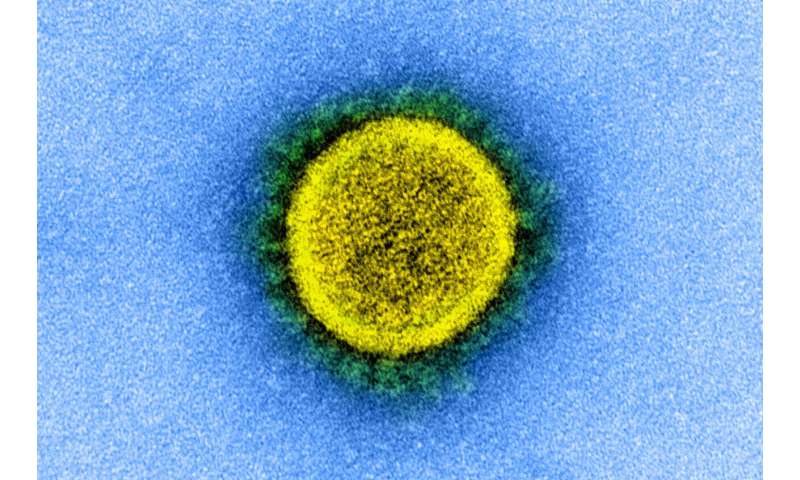

Using a combination of demographic and clinical data gathered from seven weeks of COVID-19 patient care early in the coronavirus pandemic, Johns Hopkins researchers today published a “prediction model” they say can help other hospitals care for COVID-19 patients—and make important decisions about planning and resource allocations.
Brian Garibaldi, M.D., associate professor of medicine at the Johns Hopkins University School of Medicine, led a team that published in the Annals of Internal Medicine the article that shares important lessons learned in the care of COVID-19 patients between March 4 and April 24, 2020, at five Johns Hopkins hospitals in Maryland and Washington, D.C.
During those 52 days, The Johns Hopkins Hospital, Johns Hopkins Bayview Medical Center, Howard County General Hospital, Suburban Hospital and Sibley Memorial Hospital admitted a combined 827 people age 18 or older—336 Black, 264 white, 135 Hispanic, 48 Asian, 2 Native American and 42 multiracial—who tested positive for the coronavirus and had symptoms of COVID-19.
From the data those patients generated, the researchers developed a prediction model using a set of risk factors known to be associated with COVID-19 to forecast how likely a patient’s disease is to worsen while being treated in a hospital and at what point in their care that might happen. Among the risk factors researchers considered as part of the model were a patient’s age, body mass index (BMI), lung health and chronic disease, as well as vital signs and the severity of a patient’s COVID-19 symptoms at the time of admission.
The model, called the “COVID Inpatient Risk Calculator (CIRC),” is available online. Garibaldi says the calculator is meant to help hospital physicians and other health care providers assess the risk of a patient’s condition worsening.
“This is some of what we’ve learned in the months since we started seeing patients with COVID-19 at our hospitals,” says Garibaldi. “As we continue to grapple with high numbers of COVID-19 infections across the United States, it’s important to share knowledge with our colleagues at other hospitals.”
Among the highlights of the study was the rapidity with which the disease can progress from mild or moderate to severe, particularly if a patient had all or some of the risk factors associated with the disease. Forty-five of the patients in the study had severe COVID-19 when they were admitted to the hospital. But 120 patients developed severe disease or died within 12 hours of being admitted. Of the 302 patients in the study who developed severe disease or died, the median time of disease progression was 1.1 days.
“Rapid progression of disease following admission [to the hospital] provides a narrow window to intervene,” Garibaldi writes in the article. “Different combinations of risk factors appear to predict severe disease or death, with probabilities ranging from over 90% to as little as 5%.”
For example, using the CIRC, Garibaldi and his colleagues estimate that a 60-year-old white woman with a BMI of 28, no chronic disease and no fever who is hospitalized for COVID-19 has a 10% chance of her disease worsening by day two of her hospital stay. The longer she’s in the hospital, the greater that chance becomes, at 15% after four days and 16% after a week.
Conversely, the researchers considered an 81-year-old Black woman admitted to the hospital with COVID-19. The hypothetical patient has a BMI of 35, diabetes, hypertension and a fever. CIRC forecasts her probability of progressing to severe disease or even death by just the second day of her hospital stay is 89%. That percentage increases to higher than 95% by days four and seven.
By June 24, 694 of the patients in the study had been discharged from the hospital, 131 had died and seven were still hospitalized with severe COVID-19.
“We identified a few readily measurable demographic and clinical factors that, when assessed on admission to the hospital, can predict if someone has a 5% or a 90% risk of developing severe disease or dying from COVID-19,” says Amita Gupta, M.D., professor of medicine at the Johns Hopkins University School of Medicine, who directs the Center for Clinical Global Health Education and is a co-author of the study. “This is incredibly useful information to have when communicating with patients and their families, as well as for informing resource allocation in the hospital.”
The study’s data comes from a registry of all patients treated for the novel coronavirus infection at hospitals in the Johns Hopkins system. Known as “JH-CROWN,” the registry—which is funded by InHealth, the institution’s precision medicine initiative—offers demographics, diagnoses, procedures, social histories and other data points relevant to caring for COVID-19 patients.
Source: Read Full Article